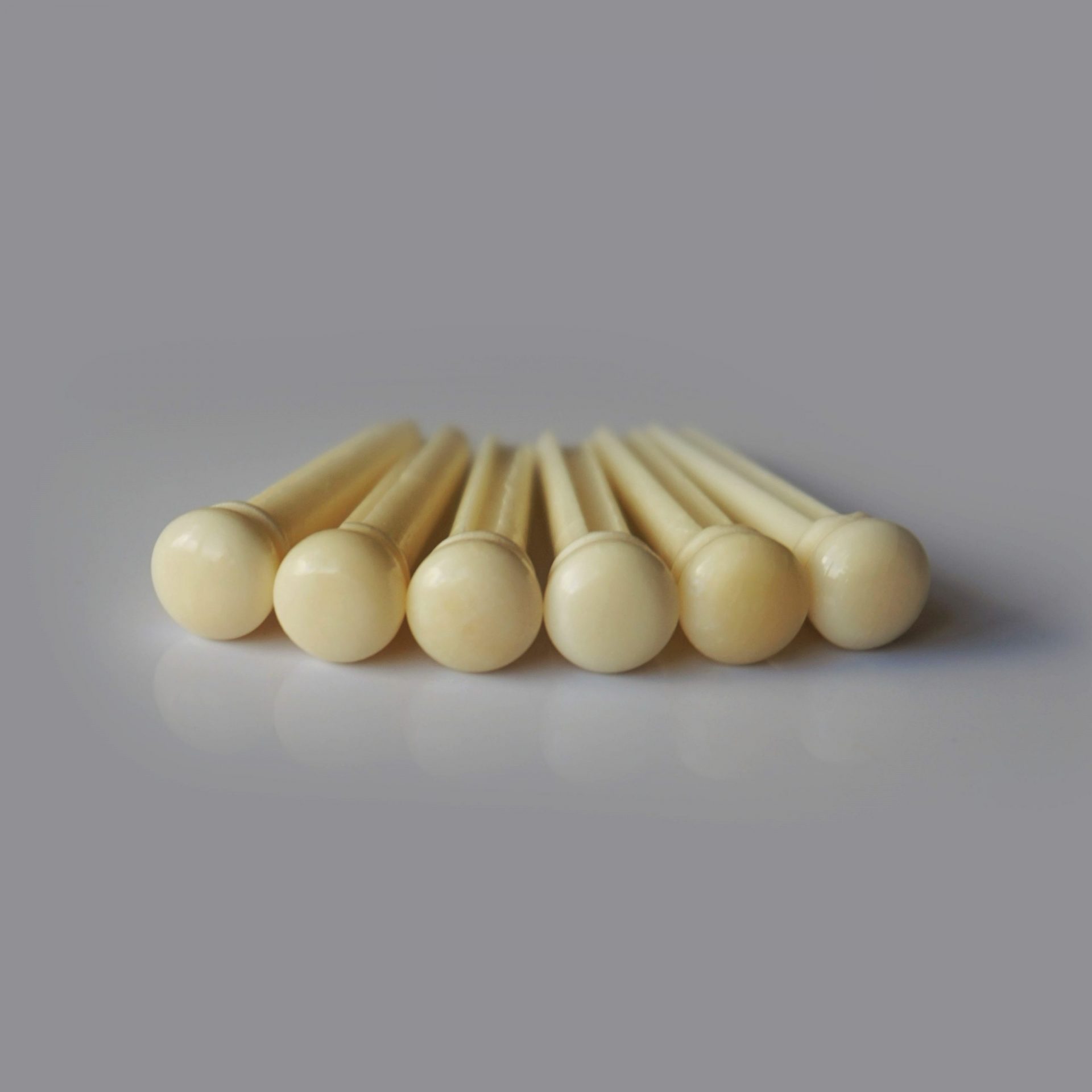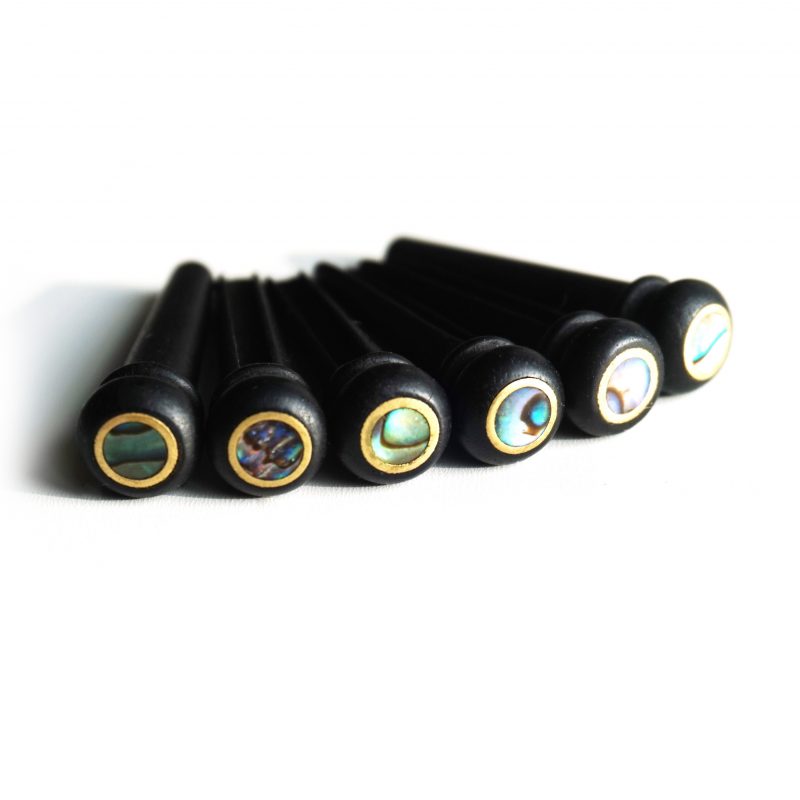Bridge Pins; a small but important part of the acoustic guitar. These little things are often overlooked when it comes to modifying your guitar. However, swapping out your bridge pins is perhaps the quickest and most effective way to improve the tone and look of your acoustic guitar.
This article is the first of a series from Guitar Anatomy that will look at guitar upgrades, build guides, tips, tricks and general guitar discussion. This article will delve into bridge pin design, identifying the best material for bridge pins in terms of tone, durability and aesthetic appeal.
Function & Purpose
Bridge pins are needed to secure the strings of your guitar in place. The ball end of the strings are threaded through the bridge, then with the pins inserted, the ball is secured against the bridge plate, acting as an anchoring point for the string. Due to this crucial contact with the string, bridge pins help to carry the vibration of the strings through the body. This is where bridge pin material comes into play.
Depending on material properties such as density and hardness, bridge pins resonate differently. This is important since acoustic guitars produce their tone through resonance. So what is the best material for bridge pins? Below, we will look at how different bridge pin materials produce different tones.
Bone
Bone is probably the most popular choice for players looking for a quick and easy upgrade. Bone produces a balanced sound, with increased sustain due to it’s density. A brighter tone will be evident in comparison to other bridge pin types. This is what makes bone one of the best materials for bridge pins. Additionally, bone is more durable than standard plastic bridge pins that come on many guitars out of the box. Due to this, they tend to last a lot longer, if not forever.
Check out our custom bone bridge pin designs here, from abalone inlays to pure bone as shown below.
Wood
Wood bridge pins produce a similar tone to bone, but with a softer and warmer sound, and still with a noticeable clarity over plastic. Wood pins are very popular as they look great aesthetically as well as improving tone. Ebony pins in particular look really great when matched with an ebony fretboard. However, like all wood, they can be prone to swelling if left in extreme conditions such as high humidity.
At Guitar Anatomy, we offer ebony and rosewood bridge pins in a selection of designs. Click here to see.
Brass
Brass bridge pins are known for their bright, punchy tone and great sustain. The main reason for this is that machined brass adds substantial weight to the bridge plate in comparison to other pin types. This increased weight prevents vibration of the bridge, producing an increase in treble and sustain.
This can be great for bass-heavy guitars that need a brighter tone. Alternatively, you may just want a brighter sounding acoustic, depending on your preference. In addition to the sound characteristics of brass, they undoubtedly look excellent, and can really alter the look of your guitar.
Our machined brass bridge pins seen below can be found here.
Plastic
If you’re serious about tone, change your plastic pins!
Plastic bridge pins are very common on most acoustic guitars <£500. They do the job, but can easily be improved upon by changing them for any of the types listed in this post. Besides offering nothing special in terms of tone, they often wear from the strings putting pressure on the plastic and have been known to snap over time.
They are cheap though and can be a great cost-effective choice on a beater.
Tips & Tricks
- Bridge pin removal – On new guitars, bridge pins can usually be removed either by hand or with a bridge pin removal tool. On an older guitar with stubborn bridge pins, a good tip is to use a coin to push up on the pin from the bottom.
- Getting them to fit – Besides getting the perfect fit bridge pins for your guitar by measuring the taper of your current bridge pins, you can simply sand down bone or wood bridge pins with some fine-grit sandpaper until a good fit is achieved. *Note – This won’t work on brass bridge pins, so make sure you compare the sizes and taper to your current bridge pins before swapping them out.
Conclusion
In conclusion, bridge pins play a small but important role in your guitar tone. They’re a relatively low cost and easy upgrade to make, so there’s really not many reasons not to.
This article covered how different bridge pin materials produce a variety of tones for your guitar, from bright and punchy to soft and balanced. If you’re not sure what would work best for you, it is well worth trying a few different sets out to find the best bridge pin material for your guitar, you might be surprised by the difference you can hear!
Bridge pins are just one of many ways to improve your guitar tone, they are many others, with nuts, saddles and strings being some of the easiest and lowest cost upgrades. These will all be covered in future articles.
If you have any questions or need any advice please don’t hesitate to get in touch via our contact page.
That’s it for now, thanks for reading!





